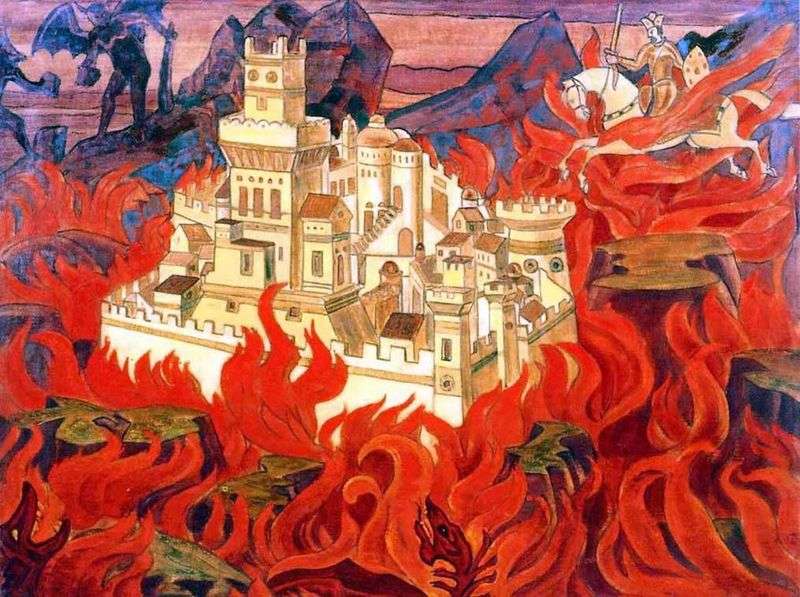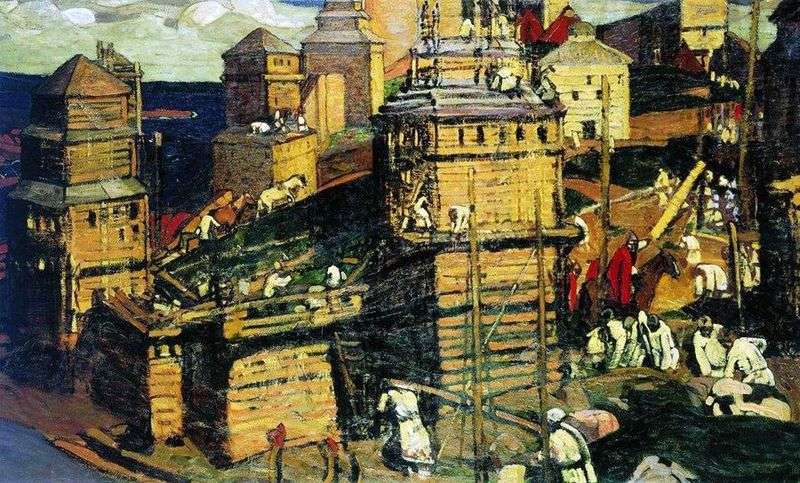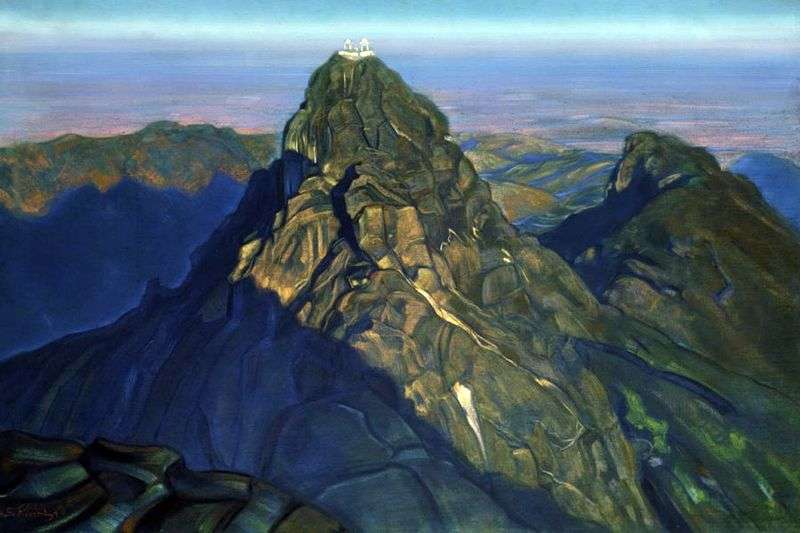
The picture “And we see” the most common name. There is one more thing – “And we shall see”, taken from the author’s list of N. Roerich’s paintings for 1917-1924. It depicts the miraculous face of Christ, imprinted on the canvas.
There are several legends about the appearance of this image. Consider one of them. The king of Edessa, Avgar, fell ill with an incurable disease and sent his ambassador to Jesus for help. The king wanted to invite Jesus to live in his city or to receive His image for his healing.
Coming to the place where Christ usually preached, the ambassador-artist tried to paint Christ. But when he began to look at Him, the blinding light coming from Christ did not give him the opportunity not only to draw, but also to look at Him. When Christ found out that the artist was unsuccessfully trying to portray Him, then He washed his face and applied a white plate to him, on which His Face was printed. The king, having received this card, healed and ordered to nail this image on a non-rotting board and hang it in a niche above the city gate.
In this picture, Lick is painted in the traditional iconographic manner on the board that the angel holds. The most striking impression is made by the sight of the all-seeing, kind and at the same time strict and deeply penetrating into the soul of the viewer the eyes of the Savior. Like a monk struck with heavenly vision, it is difficult for the viewer to take his eyes off the image of the Savior. As if all hopes and dreams of a person striving for spiritual transformation are concentrated in this image.
 Pigeon’s Book by Nicholas Roerich
Pigeon’s Book by Nicholas Roerich Purest Hail by Angers to Enemies – Nicholas Roerich
Purest Hail by Angers to Enemies – Nicholas Roerich The city is being built by Nicholas Roerich
The city is being built by Nicholas Roerich The Bowl of Christ by Nicholas Roerich
The Bowl of Christ by Nicholas Roerich And we continue fishing by Nicholas Roerich
And we continue fishing by Nicholas Roerich And we carry the light by Nicholas Roerich
And we carry the light by Nicholas Roerich And we work by Nicholas Roerich
And we work by Nicholas Roerich Girnar by Nicholas Roerich
Girnar by Nicholas Roerich